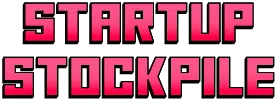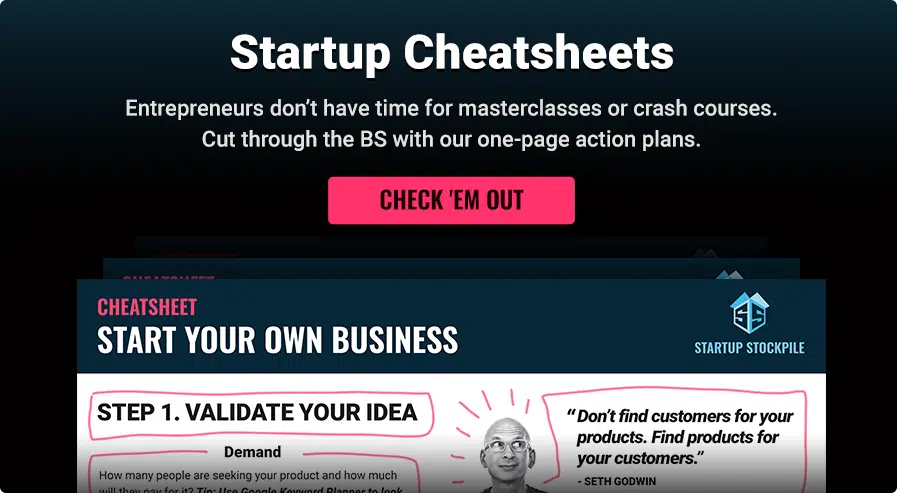You’ve undoubtedly been on the receiving end of a few sales pitches. Some fall flat, while others make you pay attention and take action.
What’s the difference? And how can you craft a sales pitch that won’t get shot down?
The trick is focusing on what your prospects want to hear, not what you want to say. Your best bet is to start by fully understanding your customer and then personalizing your pitch to overcome objections and win new business.
Here are five tactics you can use:
1. Create An Ideal Customer Profile (ICP)
An Ideal Customer Profile (ICP) is a hypothetical description of your perfect customer. A customer that would get the maximum benefit from what you are selling and provide you with significant value in exchange.
This includes value beyond paying you for your services, such as sending you referrals, providing you with testimonials, and giving you feedback that will help you improve your offer.
Your ICP describes the types of prospects you should spend time pursuing.
How do you build an ICP? Ask these questions:
Basic Demographics:
- What industry are they in?
- Where are they located?
- How big are they (annual revenue, number of employees, etc.)?
- What is their budget?
Buying Cycle:
- How much research do they do before they buy?
- Do they rely on referrals to find products?
Decision-Making:
- Who makes the purchasing decision?
- Why would they decide to purchase your product?
- What would be the biggest barrier to purchasing your product?
Pain Points:
- What are their pain points?
- What is the main problem they need to solve?
- How does your product solve the problem?
2. Prepare For Future Objections
As a salesperson, the word “no” can be a tough bullet to take. So your job is to be prepared.
Typical sales objections relate to one of the following concerns:
- Customers don’t realize they need your product.
- Customers don’t see an urgency for your product.
- Customers don’t trust you.
- Money is an issue.
- Customers don’t understand your product’s ROI.
How do you prepare to overcome them?
Use the SPIN selling technique. This technique allows you to uncover insights and build rapport using questions. What types of questions?
Below is a breakdown of what you should be asking according to Zendesk’s guide to SPIN selling.
Situation Questions:
- How do you currently do [insert process]?
- Why does your company take this approach?
- What is your budget for [insert process]?
- How important to your organization is [insert process]?
- What tools do you use to support [insert process]?
- Who does [insert process] the most? What do they need?
- How often do you have to do [insert process]?
- How much [insert resource] do you typically use in a given day/week/month?
Problem Questions:
- How cost-prohibitive is it to do [insert process]?
- Are you satisfied with your processes for [insert operation]?
- Do these processes ever fail?
- How time-consuming is it to do [insert process]?
- Have you ever run out of [insert resource]?
- Have you ever been unable to access [insert resource]?
- Has a previous interruption in [insert process or operation] cost you resources?
- Has the cost of [insert process or resource] ever kept you from [insert operation]?
- Who is responsible for handling issues with [insert process or operation]? How does it impact their workload?
- What’s your organization’s biggest challenge with [insert process or operation]?
- What are the disadvantages of your current processes for [insert operation]?
Implication Questions:
- What resources does it cost to do [insert process] this way?
- If you had more resources, what could you accomplish?
- How would you use more funds (be as specific as possible) each quarter?
- How is your issue with [insert process or resource] impacting your team?
- Does [insert process] ever keep you from reaching your business goals?
- Without your problem with [insert process or resource], would it be easier for you to reach your goals?
- What would happen if [insert process or operation] didn’t ever occur?
- Have you had this problem with [insert process or resource]?
- Where do you find the most bottlenecks with [insert process or resource]?
- Are there any hidden costs for training, equipment, etc., associated with [insert process or resource]?
Need-Payoff Questions:
- Would doing [insert process] make it easier to reach your business goals?
- Would you find it valuable to do [insert process]?
- Do you think that resolving your issue with [insert process or resource] would help your organization?
- Why is being able to do [insert process or operation] important to your organization?
- How would a solution for [insert process or resource] help your team?
3. Tell A Story About Your Customer
Samuel Hulick, the founder of User Onboard, argues that people don’t buy products. They buy better versions of themselves.
Using the example above, Hulick says that when trying to win customers, don’t list the flower’s attributes. Describe how awesome it is to throw fireballs.
The lesson here is to tell a story that sells the benefits, not the features. And not to tell “your story”, but to tell a story where the customer is the hero who solves their business problems using your product.
When you craft your sales pitch around a simple, compelling story, you’ll help your prospects understand how they benefit from your solution.
One way to do this is using the StoryBrand framework by Donald Miller.
Here are seven tenets:
- Position your customers as the hero
- Your customer has a problem (that your product solves)
- Your customer meets a guide (show them you understand their problem)
- The guide gives them a plan (explain your product’s setup process)
- The guide calls the customer to action (ask for the sale)
- The guide helps them avoid failure (use FOMO)
- Happy ending (the customer sees how your product improves their life)
Now that you have a basic overview of the StoryBrand process, here is a more in-depth summary of each principle with examples.
4. Build Trust Through Social Proof
When your prospect hears your sales pitch, the first question is: “Why should I believe you?” And that’s where social proof comes in.
What kind of social proof answers that question and builds trust?
Let’s turn to the expert advice of customer experience thought leader Shep Hyken.
Here are his four ways to build trust through social proof:
- Use testimonials and reviews: People trust others and are inclined to consult reviews online before investing in products or services. In your marketing materials, feature testimonials with pictures of real customers describing why they love doing business with you. Spotlight five-star reviews and positive feedback to demonstrate the value customers get from your offerings.
- Highlight quotes from you in articles: Being featured in articles can present you as a credible source who has earned the trust of others. Collect and feature media mentions on your website, social outreach, and other marketing materials.
- Showcase credentials, awards, and milestones: Have you or your company earned an industry designation or an award? Do you have years of expertise, or have you been in business for several years? Use these to show that you’ve earned recognition and trust.
- Capitalize on word-of-mouth: You should have processes in place to promote social sharing by your audience. In addition, you should encourage referrals and reward people who guide others to your business.
Other ways include:
- Sharing research that uses expert quotes and findings directly to your product’s benefits.
- Showing your customer how you’re better than the competition with a side-by-side product comparison.
- Earn your customers’ confidence by offering a money-back guarantee, free trial, or even free shipping.
5. Get Your Foot In The Door With An Elevator Pitch
Don’t have time for a sales presentation? Have your elevator pitch ready.
Here’s a three-step elevator pitch formula highlighted in Entrepreneur magazine that you can use:
- Start with a “Do you know?” question: Create a question that identifies the need or pain point your solution solves.
- Follow up with a “What we do” (or “What I do”) statement: Next, describe your products or services starting with the phrase, “What I do” or “what we do.”
- End with benefits: Wrap up by connecting your service or products to benefits customers gain and use the phrase “so that.”
An example of a tutoring company may look like this:
“Did you know that kids behind in reading at the end of third grade are at risk for impaired academic growth throughout their school career? We provide after-school tutoring twice weekly using evidenced-based techniques so that kids can master the essential reading skills they need to succeed in school.”
Wrapping It Up
You may think of a sales pitch as an opportunity to share facts, features, and benefits of your products or solutions. But the truth is, the best sales pitches aren’t all about you and what you offer. Instead, you need to flip the script.
If you don’t fully understand your target customer’s challenges, they will shoot holes in your pitch.
Take time to understand your target customers — and then personalize your pitch. Focus on your prospect’s needs and concerns. Ask questions and let them do most of the talking.
Equipped with that insight, you can paint a picture of how what you offer is exactly what they need. Tell stories to help them envision the bright future they can have by doing business with you. And give them examples of others who have already walked that path with stories from happy customers.
When you know your customers, you can position yourself as a trusted advisor (think Yoda to their Luke Skywalker) with their best interests at heart.
Editor’s Note: The article is part of the blog series Grow Your Business, brought to you by the marketing team at Unitel, the virtual phone system priced and designed for startups and small business owners.







